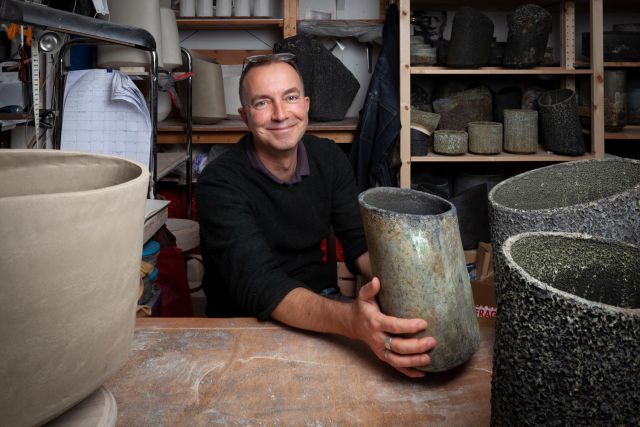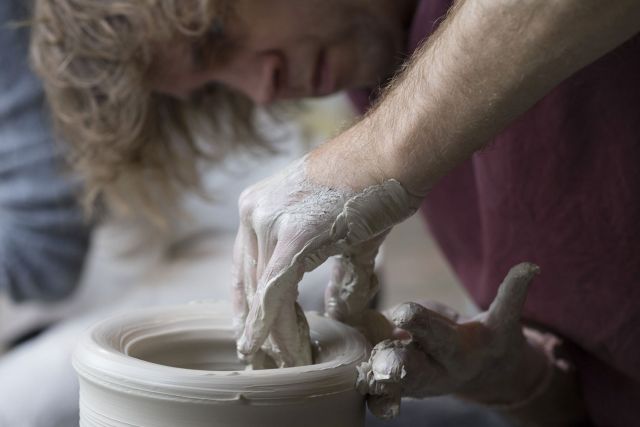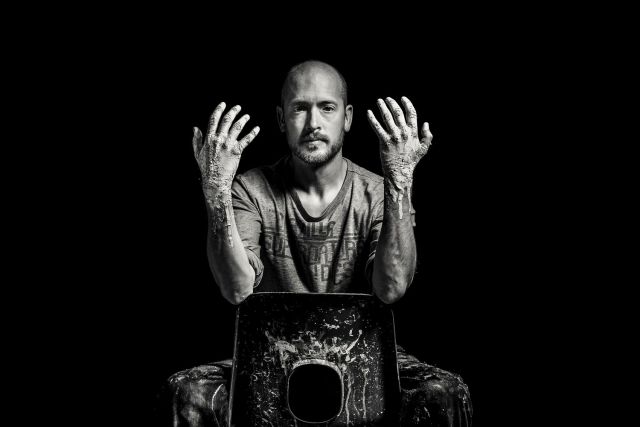Helen’s signature ‘lenticular, moiré ceramic’ style - ‘shifting and moving surface effects’ - is created by using stained black clay screen printed onto plaster batts, contrasting with white porcelain casting slip. By forming a textured, wafer-thin sheet of clay into an upright, oval cylinder and attaching a base, the translucency of the material enables light to shine through the vessel's wall.
Height 25 cm
Width 13 cm
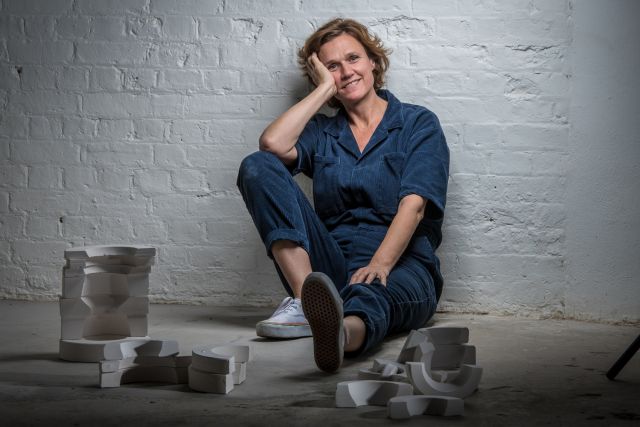
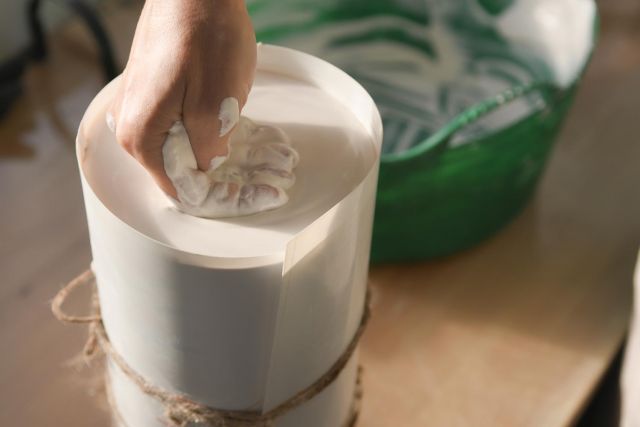
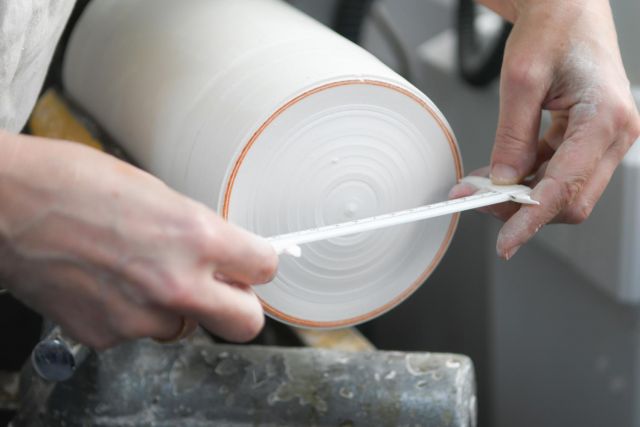
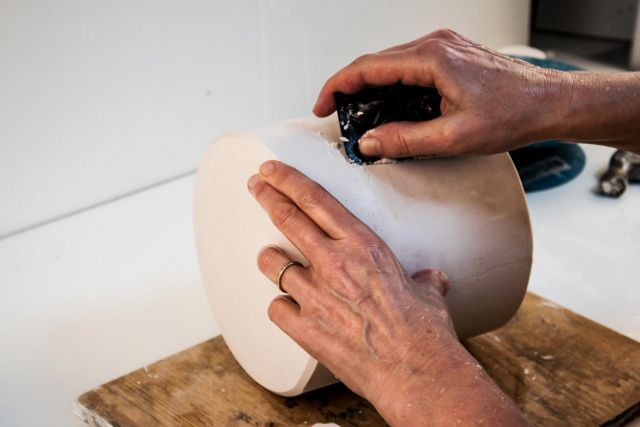
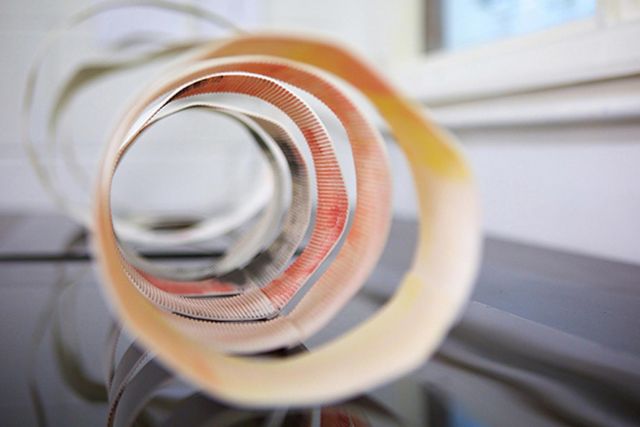
Helen Johannessen
- Ceramicist
- London, United Kingdom
- Master Artisan
By appointment only
+44 7941087372
From film to ceramics
- • Helen was previously a model maker in the film industry
- • She likes that porcelain can be so thin, yet strong and voluminous
- • She was presented with the HRH President Award for Industrial Ceramics 2020
Helen Johannessen is a ceramicist with very specific experience. Working in the film industry in the 90s, prior to her art and design work, showed her how much material waste was produced in large scale projects. Most of the models, handiwork and skilled craft ended up in a skip after the film shoots. It broke her heart to see how disposable our world is and such artistry being treated in this way. This ignited an idea to express a throw-away society using the natural and permanent material of ceramic. She created her first sculpted and designed collection, Is that Plastic?, in 2000. She set up a brand called Yoyo Ceramics, which make ironic, quirky, and colourful homeware. She created, among many interesting objects, the iconic Is that Plastic? Butter Dish and Ceramic Notepad. Since 2015 she focuses on works in porcelain, sculptural forms and wall art which consider light, tone and balance.
Read the full interviewWorks
Photo: ©Sylvain Deleu

Photo: ©Davy Pinnuck
White porcelain is cast into large, wafer-thin sheets of clay, stained orange clay is applied to one side. Cut into thin strips and assembled into wide, upright cylinders, the kiln ultimately forms the over-all fluid structure through high heat. The outer surface is polished to a satin feel after the first firing.
Length 120 cm
Width 35 cm
Height 25 cm

Photo: ©Matthew Booth
These distorted traditional vase forms in a brutalist style were Bisque fired and glazed. Plaster moulds were made from a vase that had been sawn up, re-assembled, then secured before porcelain casting slip was poured in to create the new shapes. When set, the mould is removed, any imperfection is highlighted with surface pattern.
Height 20 cm
Width 15 cm

Photo: ©Sylvain Deleu
Using the colours of orange, yellow, black and white, Helen screen printed clay onto a plaster batt. An A3 sheet of porcelain is cast, carefully removed from the plaster, cut up and laminated together to make double-sided vessel walls, before cutting to size and joining. A base is attached and smoothed to create a low, wide contemporary and decorative ceramic object, reminiscent of an abstract desert.
Length 32 cm
Width 21 cm
Height 11 cm

Photo: ©Matthew Booth
A slip cast vase is left upside down to dry in the plaster. The drips usually trimmed, remain and are glazed and gold lustered. This project emerged in lockdown, using other people’s old or no longer wanted materials.





